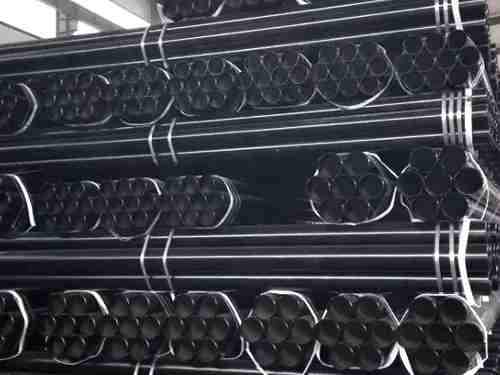As a crucial material in modern construction, H-beam steel is widely used for its structural advantages. However, its processing and cutting techniques play a key role in determining its performance and durability. This article provides an in-depth overview of the processing and cutting methods for H-beam steel, offering valuable insights for industry professionals.
Processing Technology of H-Beam Steel
H-beam steel, characterized by its "H"-shaped cross-section, combines excellent mechanical properties with versatile processing options. The main steps in processing H-beam steel include:
- Steel Cutting
Steel is cut to the desired dimensions using flame cutting, laser cutting, or plasma cutting. Among these, laser cutting stands out for its precision and clean edges, though it incurs higher costs.
- Steel Straightening
Rolling processes often introduce bending or twisting, necessitating straightening through mechanical or hydraulic methods to achieve the required flatness and alignment.
- Steel Forming
Steel is bent or folded as per design specifications. Care must be taken during forming to prevent cracks or deformation.
- Steel Assembly
Shaped components are assembled via welding or bolting, ensuring positional accuracy and structural integrity during the process.
- Steel Welding
For welded joints, appropriate welding techniques and parameters are used to ensure robust connections and a smooth surface finish.
- Steel Inspection
Finished H-beam steel undergoes inspection for size, shape, and accuracy. Adjustments or corrections are made if any discrepancies are detected.
Cutting Processes for H-Beam Steel
The cutting process is critical in preparing H-beam steel for specific applications. The three primary cutting methods are:
- Flame Cutting
Description: This traditional method uses a high-temperature flame to partially melt and cut steel.
Advantages: Low cost, fast cutting speed, and suitability for thicker steel plates.
Disadvantages: Low precision, rough surface finish, and significant smoke and harmful gas emissions requiring environmental treatment.
- Laser Cutting
Description: A high-precision technique where a concentrated laser beam melts and cuts the steel.
Advantages: High accuracy, smooth cutting edges, and compatibility with steel plates of varying thicknesses. It also produces minimal pollutants.
Disadvantages: High operational costs, making it less accessible for smaller enterprises.
- Plasma Cutting
Description: This method uses a high-temperature plasma arc for cutting.
Advantages: High accuracy, smooth surface quality, fast speed, and moderate costs.
Disadvantages: Greater environmental impact compared to flame cutting, requiring proper pollutant management.
Selecting the Right Cutting Method
Choosing the appropriate cutting technique depends on the specific requirements of the project:
Flame Cutting: Ideal for low-cost, quick processing of thick steel plates.
Laser Cutting: Preferred for high-precision and versatile cutting across various plate thicknesses.
Plasma Cutting: A balanced option for precision and cost-effectiveness, suitable for thicker plates.
For larger enterprises, combining these cutting methods based on operational needs can optimize processing outcomes and economic efficiency.
By mastering the processing and cutting techniques of H-beam steel, professionals can enhance its application efficiency, contributing to stronger and more durable construction projects.

 English
English Español
Español











